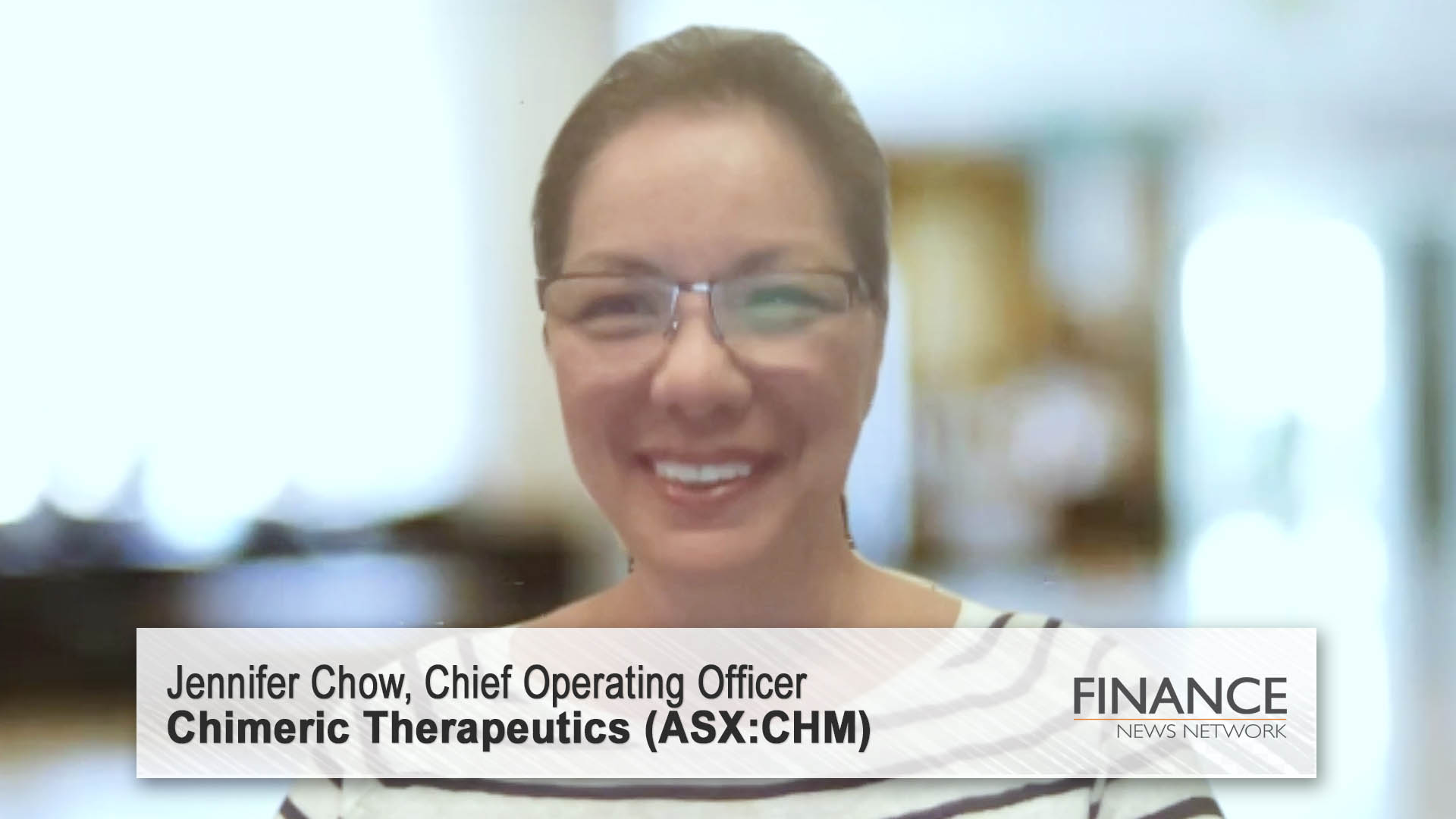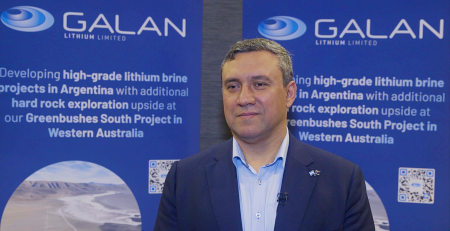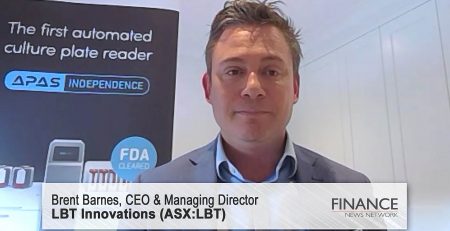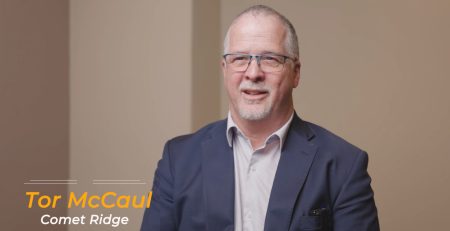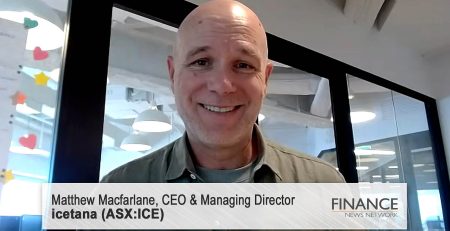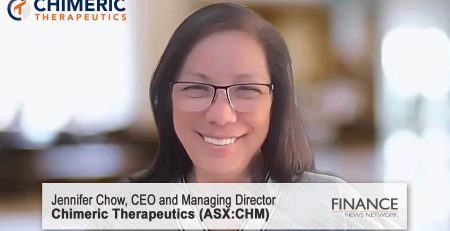Chimeric Therapeutics (ASX:CHM) clinical stage T cell therapy biotech targeting glioblastoma
Chimeric Therapeutics Limited (ASX:CHM) Chief Operating Officer Jennifer Chow talks about the company's phase 1 trial results for its chlorotoxin CAR T (CLTX CAR T) cell therapy targeting glioblastoma.
Melissa Darmawan: Hello. Melissa Darmawan for the Finance News Network. Joining me from Chimeric Therapeutics (ASXLCHM) is Chief Operating Officer Jennifer Chow. Jennifer, nice to meet you, and welcome to FNN.
Jennifer Chow: Thank you so much, Melissa. It's wonderful to be here.
Melissa Darmawan: It's great to have you. First up, can you start off with an introduction to the company?
Jennifer Chow: Chimeric Therapeutics is a clinical-stage biotech company, and we are focused on bringing the promise of cell therapy to more patients with cancer. And, for us, what that really means is bringing more curative therapies to patients with cancer, not just therapies that delay disease progression. Chimeric Therapeutics, as many of you probably know, had a very successful IPO in January of this year, and we thank everybody for their support. And, really, that was based on the founding of one CAR T therapy or cell therapy, which is our chlorotoxin CAR T therapy that is currently in a phase 1 clinical trial at the City of Hope Hospital in California. And we're now very active in rapidly accelerating the development of that particular therapy, as well as looking at additional therapies that we could bring into our pipeline to be able to bring the promise of cell therapy to more patients.
Melissa Darmawan: You have talked about the cell therapy that the company is working on. Can you talk us through a bit more about the science behind that?
Jennifer Chow: Cell therapy and CAR T cell therapy probably a decade ago might have sounded a little sci-fi-like, but essentially what it really does is it uses a patient's own cells. So, that's why it's called a cell therapy. It's also an immunotherapy because it's using a patient's own cells. In kind of the most simple terms, what happens with CAR T cell therapy is a patient has what really seems like sort of a blood… They have their blood taken. That blood is then shipped off to a lab for manufacturing, where it's genetically engineered. And what we do in the engineering is we actually make it express what's known as a Chimeric Antigen Receptor or CAR, and that's how it gets its name as a CAR T therapy. And what that CAR does is it actually is programmed or designed very specifically to go looking for an antigen on a tumour. So it actually is looking for a very specific thing on a tumour cell. And when it finds it, it binds onto it, holds onto it very tightly, and then it sends a message that says, "Okay, this is a tumour cell. We need to kill this cell." And so really what we're doing in all of that is using cell therapy and leveraging the patient's own cells, genetically engineering them a little to really make them more effective against treating a patient's cancer.
Melissa Darmawan: And could you provide an update on the phase 1 trials?
Jennifer Chow: So, chlorotoxin, which is our particular CAR T cell therapy, it actually uses a very unique tumour-targeting domain. It uses deathstalker scorpion venom to act as its tumour-targeting domain. And what it's doing is it is looking very specifically for glioblastoma cells, which is the most fatal brain cancer that is out there. Our chlorotoxin CAR T right now is in a phase 1 clinical trial at the City of Hope Hospital. And that particular trial was meant to recruit about 18 to 36 patients. Where we are right now, very exciting, is that we recently announced that we actually completed the first dose cohort, we've moved on to the second dose cohort, and we've actually started the dosing of the first patient in that dose cohort. So, that is a wonderful advancement for this trial. It allows us to introduce higher doses of our CAR T cell therapy to patients, and it also allows us to move into dual administration, where we're giving the actual cells to a patient in two different locations in their brain. So, very excited at reaching that milestone recently and continuing to advance the trial.
Melissa Darmawan: Last question, Jennifer — is there anything else you'd like to add?
Jennifer Chow: Thanks for the opportunity, Melissa. So first of all, I think we are incredibly excited at Chimeric about advancing chlorotoxin, and we're very much focused on rapidly bringing that to patients. We are also right now really focused on our pipeline, because we do believe that by building out a bigger pipeline or a stronger pipeline with additional assets that have the same type of promise to patients, we're actually going to be able to help more patients in the long term. And so we're thrilled to be able to be focused there as well. And I think we just want to thank everybody for their interests in Chimeric, and look forward to providing additional updates as we continue to move forward and grow.
Melissa Darmawan: Jennifer Chow, thanks for the update. I look forward to hearing from you again.
Jennifer Chow: Thank you so much, Melissa. It was great to talk to you.
Ends
Copyright 2021 – Finance News Network
Source: Finance News Network

